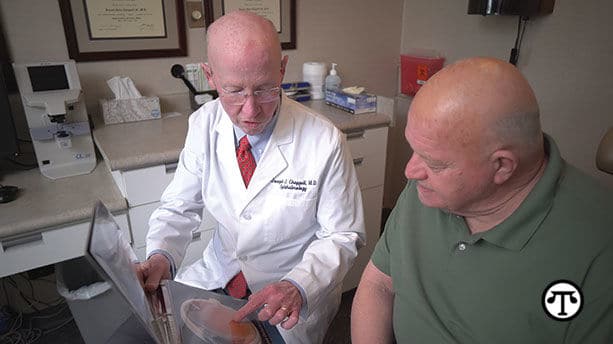(NAPSI)—People with low vision have blind spots that can make it difficult or impossible to drive, read or see faces. These impairments cannot be corrected by surgery or glasses. What’s more, too many are blind to the realization that much can be done to improve their quality of life.
What Can Be Done
In fact, low vision rehabilitation services help people make the most of the vision they have. The first step is to get an eye exam by an ophthalmologist, a physician who specializes in medical and surgical eye care.
Who Can Help
An ophthalmologist can determine the full extent of vision loss and exact location of blind spots. Either the ophthalmologist or a low vision specialist can then determine the best techniques and devices that can help you get around your individual challenges.
Where EyeCare America Comes In
If you’re concerned about the cost of the exam, the American Academy of Ophthalmology’s EyeCare America program may be able to help. This national public service program provides eye care through volunteer ophthalmologists for eligible seniors 65 and older; and those at increased risk for eye disease. As one EyeCare America patient said, “I’m a senior living on a low income. It had been 30 years since I’d had an eye exam. It was a true blessing to receive this service.”
Low Vision Services Offer Hope
The field of vision rehabilitation has advanced significantly over the years, offering more effective technologies and strategies. Today, ophthalmologists’ solutions range from simple, portable video magnifiers to enlarge text and objects to high-tech glasses with cameras that let people read text and see faces.
In addition, there are many simple changes people can make on their own to help them live better:
• Improve contrast. Contrasting colors can make it easier to accomplish household tasks and improve safety. Put dark place mats under white place settings, get area rugs that are a contrasting color with the floor and kitchen towels and cutting boards that contrast with the counter top. Use contrasting colored tape along the edges of rugs, stair steps and lamp shades.
• Improve lighting. Every year, about three million older Americans are treated for injuries from falls, according to the Centers for Disease Control and Prevention. Many of these falls are caused by low vision. Add lighting to staircases and dark hallways. Remove rugs from hallways to prevent tripping. Task lighting in the kitchen can make food preparation safer and easier.
• Reduce clutter and organize. A cluttered house is more difficult to navigate and can contribute to falls and frustration. When each item has a specific place and is identified with a high-contrast label, it’s easier to locate items needed for everyday living.
• Embrace technology. Books on tape and personal voice-activated assistants, such as Google Home or Amazon’s Alexa, can be enormously helpful for people who can no longer see well enough to read, dial a phone or set a thermostat. With a simple voice command, these can phone dial a friend for you while the thermostat dials up the heat.
While there isn’t one strategy or tool that works for every person, vision rehabilitation offers hope for many and can help people stay in their homes and continue doing the things they love.
Learn More
For further facts and tips, visit www.eyecareamerica.org. To see if you or someone you care for is eligible for the EyeCare America program, visit www.aao.org/eyecareamerica.
![]() “The American Academy of Ophthalmology’s EyeCare America program provides eye care through volunteer ophthalmologists for eligible seniors and those at increased risk for eye disease. http://bit.ly/2OG5PSM”
“The American Academy of Ophthalmology’s EyeCare America program provides eye care through volunteer ophthalmologists for eligible seniors and those at increased risk for eye disease. http://bit.ly/2OG5PSM”
On the Net:North American Precis Syndicate, Inc.(NAPSI)






